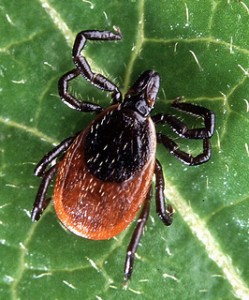 There must be something that candidiasis and lyme disease have in common for one to be mistaken for the other. The Centers for Disease Control and Prevention includes fatigue and headache in its enumeration of the symptoms associated to lyme disease. Apparently, those two conditions are likewise considered to be two of the symptoms signaling the condition known as candidiasis. Other common symptoms between the two are abdominal pains, joint pains, insomnia, swollen glands, poor concentration, and rashes among others.
There must be something that candidiasis and lyme disease have in common for one to be mistaken for the other. The Centers for Disease Control and Prevention includes fatigue and headache in its enumeration of the symptoms associated to lyme disease. Apparently, those two conditions are likewise considered to be two of the symptoms signaling the condition known as candidiasis. Other common symptoms between the two are abdominal pains, joint pains, insomnia, swollen glands, poor concentration, and rashes among others.Candidiasis in brief
This condition, as defined by the Center for Disease Control and Prevention website, is a fungal infection most commonly caused by candida albicans. Naturally, the human body contains the yeast-like fungi called Candida but its overgrowth can lead to health problems that include but are not limited to the said condition.
In the data offered by the University of Maryland Medical Center, 90% of AIDS/HIV victims develop yeast infection. A large portion of the female population, about 75% to be exact, will also develop yeast infection throughout their lifetime. The New York Times also reports that people with weak immune systems may develop an infection that affects the bloodstream (systemic yeast infection).
Other symptoms
Candidiasis is usually characterized by rashes in the skin, they will usually have redness and itching on the moist, warm, creases on your body such as armpits, and private areas. Candidiasis is also associated with painful cracks in the corners of the mouth, blisters, irritation, and white discharge among others.
Lyme disease
It is defined as an acute inflammatory disease transmitted by blacklegged ticks. During the early stages, skin lesions, fever, chills and fatigue accompany the disease. In extreme cases, the problem may progress into neurological and cardiac disorders. As the LymeDisease.org points out, without immediate medical attention, this disease can also affect your muscles and joints as well as your digestive and reproductive systems.
Other signs that you have it
The National Health Service notes that muscle and joint pains, fever, stiff neck, tiredness, numbness of the limbs, rashes and thinning of the skin, impaired memory, problems in concentration, depression, increased sensitivity to light and temporary paralysis to name a few may serve as warning signs that you are suffering from lyme disease.
The Problems with Misdiagnosis
An overgrowth of the yeast-like fungi is usually linked to the use of antibiotics. The National Institutes of Health reminds you that such medications destroy the good bacteria that help to regulate the amount of the yeast-like fungi to a harmless level. However, antibiotics are prescribed to patients suffering from lyme disease. In the event of a misdiagnosis, the problem which was supposed to be addressed will potentially worsen.
How can you save yourself?
As if the effects of both conditions are not yet enough to give you and I a dose of bad news, we even learned about the likelihood of misdiagnosis. So what can you and I possibly do to save ourselves from conditions that harm our health? While there is no guarantee that we will never develop any of the two, it would still work to our advantage if we make it a point to take good care of our bodies.
Proper diet helps prevent the development of disease in the body. Regular exercise is important for our health as well. You can gain benefits by doing routine visits at the doctor, and make sure there are no abnormal warning signs, and our body is functioning properly.
If your doctor notices any problem, we need to acknowledge that our cooperation is necessary. In particular, we have to take the medications prescribed and rest if we must. That also translates to self-control in so far as our diet is concerned. If we are told to refrain from eating certain foods, we have to be strict on ourselves during meals. Diet is one of the most challenging parts of treating yourself from a Candida infection.
Furthermore, we should also pay attention to the changes in our bodies. Sometimes, even the slightest change may signify a bigger problem. It’s not advisable to treat yourself for every health problem, you have to recognize if the issue is bigger than you can handle. Just as you go to a mechanic for major car issues you need to do the same with your body. You must take care of any problems with your body, before it’s too late.
No comments:
Post a Comment